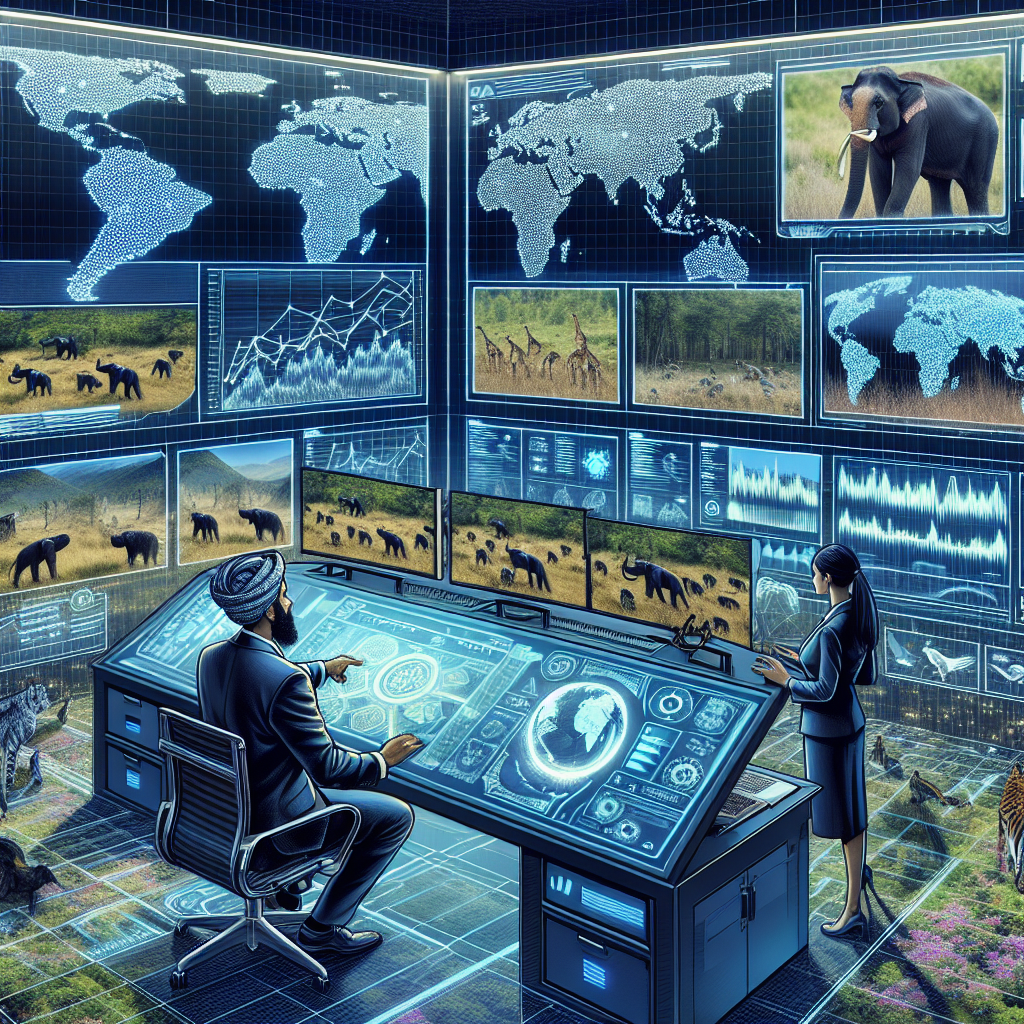The Impact of AI Software on Wildlife Conservation
In recent years, the use of artificial intelligence (AI) software has revolutionized many industries, including wildlife conservation. AI software has the potential to significantly enhance the efforts of conservationists in protecting endangered species, monitoring ecosystems, and combating illegal wildlife trafficking. This technology is proving to be a powerful tool in the fight to preserve our planet’s biodiversity.
AI software is being used in a variety of ways to aid wildlife conservation efforts. One of the key applications of AI in this field is in monitoring and tracking endangered species. By analyzing data collected from cameras, drones, and satellite images, AI software can help researchers identify and track individual animals, monitor population trends, and study their behaviors. This information is crucial for making informed decisions about conservation strategies and allocating resources effectively.
AI software is also being used to combat illegal wildlife trafficking. Poaching and the illegal trade of wildlife products pose a serious threat to many species around the world. AI algorithms can analyze data from sources such as social media, online marketplaces, and shipping records to identify patterns and trends associated with illegal wildlife activities. This information can help law enforcement agencies and conservation organizations target and disrupt illegal wildlife trade networks.
In addition to monitoring and anti-trafficking efforts, AI software is also being used to predict and mitigate the impacts of climate change on wildlife. By analyzing climate data and habitat information, AI algorithms can help researchers identify areas that are most at risk from climate change and develop strategies to protect vulnerable species. This technology can also be used to predict the spread of diseases that threaten wildlife populations and develop targeted interventions to prevent outbreaks.
Overall, the impact of AI software on wildlife conservation is significant. By providing researchers and conservationists with powerful tools for data analysis, monitoring, and prediction, AI technology is helping to improve the effectiveness and efficiency of conservation efforts. However, there are also challenges and limitations to consider when using AI software in wildlife conservation. It is important to address these issues to ensure that AI technology is used responsibly and ethically in the conservation field.
Challenges and Limitations of AI in Wildlife Conservation
While AI software has the potential to greatly benefit wildlife conservation efforts, there are several challenges and limitations that must be considered when using this technology in the field.
1. Data Quality and Bias: One of the biggest challenges with AI software in wildlife conservation is ensuring the quality and accuracy of the data used to train algorithms. Biased or incomplete data can lead to inaccurate predictions and decisions, which could have negative consequences for conservation efforts. It is important to carefully vet and validate the data used in AI models to ensure that they are representative and reliable.
2. Ethical Considerations: Another challenge with AI technology in wildlife conservation is the ethical implications of using algorithms to make decisions about the management of wildlife populations. Issues such as data privacy, consent, and fairness must be carefully considered to ensure that AI is being used in a responsible and ethical manner.
3. Cost and Accessibility: Implementing AI software in wildlife conservation can be costly, and many organizations may not have the resources or expertise to develop and deploy AI models effectively. It is important to consider the cost and accessibility of AI technology when planning conservation projects to ensure that it is being used in a sustainable and equitable way.
4. Human-Wildlife Conflict: AI software can help researchers monitor and track wildlife populations, but it is also important to consider the potential impacts of this technology on human-wildlife interactions. For example, using drones to monitor endangered species could disturb their natural behaviors and habitats, leading to increased stress and potential conflicts with humans. It is important to balance the benefits of AI technology with the potential risks to wildlife populations.
FAQs
Q: How is AI software used in monitoring endangered species?
A: AI software is used to analyze data collected from cameras, drones, and satellite images to identify and track individual animals, monitor population trends, and study their behaviors. This information is crucial for making informed decisions about conservation strategies.
Q: How is AI software used to combat illegal wildlife trafficking?
A: AI algorithms can analyze data from sources such as social media, online marketplaces, and shipping records to identify patterns and trends associated with illegal wildlife activities. This information can help law enforcement agencies and conservation organizations target and disrupt illegal wildlife trade networks.
Q: What are the limitations of using AI software in wildlife conservation?
A: Some of the limitations of AI software in wildlife conservation include data quality and bias, ethical considerations, cost and accessibility, and potential impacts on human-wildlife interactions. It is important to address these challenges to ensure that AI technology is used responsibly and ethically in the conservation field.
In conclusion, the impact of AI software on wildlife conservation is significant and promising. By providing researchers and conservationists with powerful tools for data analysis, monitoring, and prediction, AI technology is helping to improve the effectiveness and efficiency of conservation efforts. However, it is important to address the challenges and limitations of using AI in wildlife conservation to ensure that this technology is used responsibly and ethically. With careful planning and consideration, AI software has the potential to be a valuable asset in the fight to preserve our planet’s biodiversity.

